The Anatomy of a Low Profile Ring
So what makes a low profile engagement ring a practical pick for people with busy hands? For one, these rings use only those settings that have no elevation nor ornamentation. Bezel setting is one of the most popular choices in low-profile engagement rings, see picture 1 below. The bezel settings, both half and full sit at the finger level. They level with the finger thus facilitating handwork. The geometry of a low-profile ring, picture 1, is exactly the opposite of high-set rings, picture 2 below.
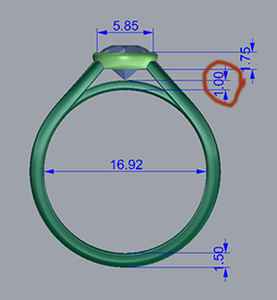
Picture 1: Bezel set elevation from finger, 1 mm

Picture 2: High profile engagement ring
The bezel is however not the only setting that offers a low-level setting. The basket setting too fits the description of a low-level setting. In a basket setting, the bracket touches the finger thus laying reasonably low. As for the gem, it only stands a fraction of inches above the finger (1mm usually). That gives it an illusion of elevation without physically offering none. See picture 3 of a low profile basket setting.
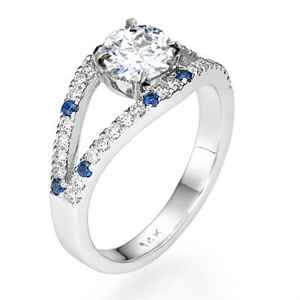
Picture 3: low profile basket set sample
So, if you are not a great fan of rings with a lifted gallery, then the low profile engagement rings are a great choice in terms of practicality and style. Check out the wide range of low-set engagement rings that are available in the market to pick one that is both off-the-charts and practical.
Bezel setting myths broken:
The cons that are often given to bezel set engagement rings are:
1) Because they are “wrapped” all the way around the side of the center diamond, they block light entering from sides of the stone, making it sparkle less.
Myth Breaking:
All diamond’s “Cut” studies speak about the rays that enter from the diamonds crown-(top side of the diamond) only, see picture 4 below:

Diagram 4:Diamond sparkle source
The sparkle that we see in a diamond is as a result of light rays entering the top of the stone, reflecting off the inside lower parts (The Pavillion) and then exiting back out at the top to our eyes, we call this “Sparkle”.
As long as the bezel doesn’t limit the amount of light that is entering the crown of the diamond, the impact on the sparkle will be minimal. Therefore it is important to check that no part of the top side of the diamond is covered by the bezel more than is necessary to hold it in, which leads us to myth number two:
2) Diamond in a bezel set looks smaller because it is covered all around by the bezel for setting it.
Myth Breaking:
The amount of metal covering the diamond is negligible, see diagrams 5 and 6, bezel setting procedure
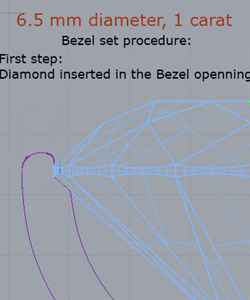
Diagram 5 : Diamond inserted
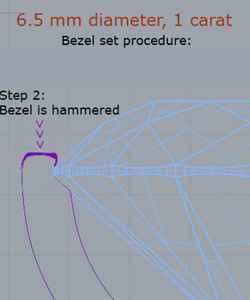
Diagram 6: Bezel halo is hammered
Not only it is negligible area but on the contrary- The bezel creates a metal Halo around the diamond which gives it the Halo effect of making the diamond look bigger. See 3/4 carat diamond in a bezel in picture 7 below:
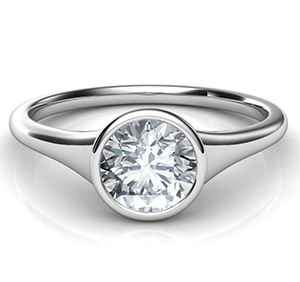
Picture 7: The Bezel set Halo effect
 The Goldsmith workbench
The Goldsmith workbench
Read another Low Profile engagement ring article
Read less
![Black Friday Sale]()




 ​
​